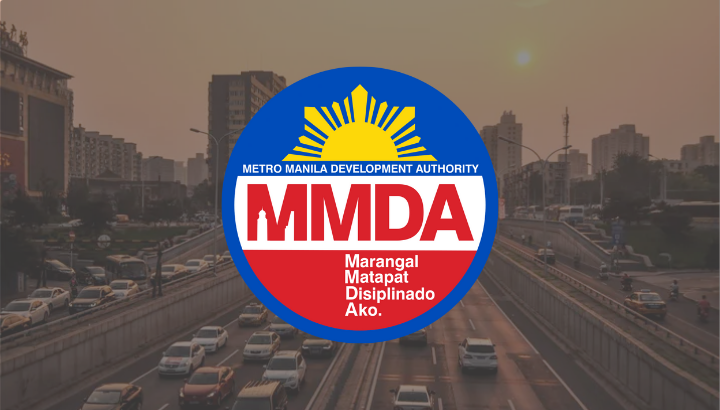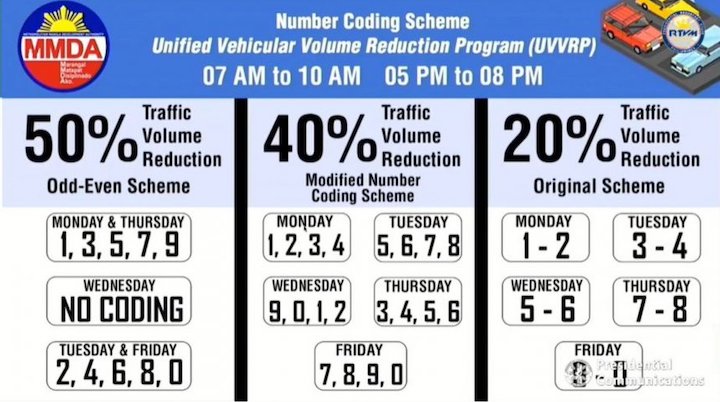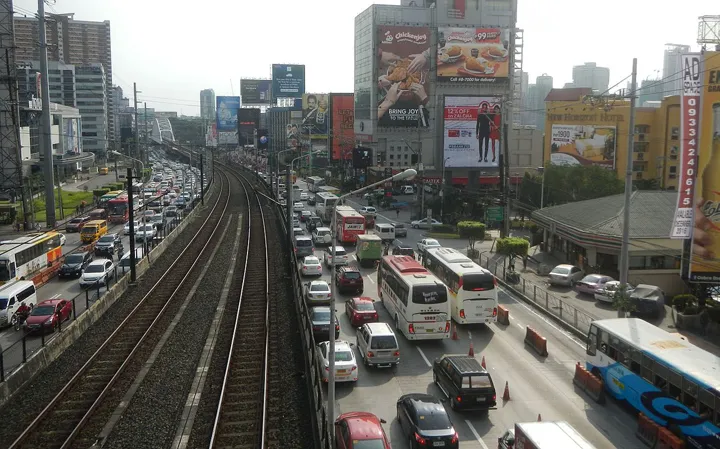
With the increase in traffic in major cities across the NCR, the Metropolitan Manila Development Authority (MMDA) has recently suggested and discussed changes in order to ease heavy traffic during rush hour in Metro Manila. As stated by MMDA Chairperson, Romando Artes, approximately 3 Billion Pesos of the citizens and country’s hard-earned money is lost each day due to increasing traffic congestion and not to mention the precious time wasted sitting in traffic.
The first topic of discussion was limiting provincial buses from entering the NCR. On which, they would be able to enter during a specified window period from 10 PM to 5 AM. The MMDA noted that what definitely worsens rush hour and causes heavy traffic is the fact that over 4,000 buses from the north and 3,000 buses from the south travel through the NCR each day.

A revised proposal on the coding scheme being implemented in the NCR was also discussed. They have proposed 2 new coding schemes that look to significantly reduce the volume of traffic by up to 50%. Each coding scheme calls for the ending number on a car’s license plate to be the basis of which days that car would be prohibited from driving in Metro Manila.
Coding Scheme Suggestions by MMDA
Table of Contents
Proposal 1: The Odd-Even Scheme
Estimate: 50% Traffic Volume Reduction
- Mondays and Thursdays – Vehicles with Odd ending plate numbers (1,3,5,7,9)
- Tuesdays and Fridays – Vehicles with Even ending plate numbers (0,2,4,6,8)
- No coding is implemented on Wednesdays.
- The coding scheme would be implemented in the morning from 7 am to 10 am and in the evening from 5 pm to 8 pm.
Proposal 2: The Modified Number Coding Scheme
Estimate: 40% Traffic Volume Reduction
- Every Monday – plate numbers ending in 1,2,3,4
- Every Tuesday -plate numbers ending in 5,6,7,8
- Every Wednesday -plate numbers ending in 9,0,1,2
- Every Thursday-plate numbers ending in 3,4,5,6
- Every Friday -plate numbers ending in 7,8,9,0
- For every car, 2 days will be covered.
- The coding scheme would be implemented from 7 am to 10 am in the morning and from 5 pm to 8 pm in the evening.
Proposal 3: The Original Coding Scheme (Currently Implemented)
Estimate: 20% Traffic Volume Reduction
- Mondays – plate numbers ending in 1 and 2
- Tuesdays – plate numbers ending in 3 and 4
- Wednesdays – plate numbers ending in 5 and 6
- Thursdays – plate numbers ending in 7 and 8
- Fridays – plate numbers ending in 9 and 0
- With the new proposal, the original coding scheme would be implemented from 7 am to 10 am in the morning and from 5 pm to 8 pm in the evening.

Another proposal by the MMDA was to implement a daily Daylight Saving Time (DST), similar to what New York City does. Although it’s not the DST where we move our actual times one hour back or forward. But rather, the proposal states that any work for a government employee and any government transaction is to be conducted from 7 AM to 4 PM so that government employees can go home earlier and avoid rush hour. This proposal shall still be consulted with the Civil Service Commission headed by former Cabinet Secretary Karlo Nograles.
Furthermore, the MMDA suggested a 4 day work week in order to lessen traffic. 2 schemes of this idea were proposed. The first scheme is that of having a 10-hour workday whilst working only 4 days a week. This idea is up for debate still due to the Labor Code stating overtime would be any excess of 8 hours a day. The second scheme would be the normal 8-hour workday whilst working in the office for 4 days a week and 1 day where one works from home.

With technology ever-growing, the MMDA has invested in increasing and improving the CCTV cameras in our motorways. This is all with the objective of achieving “No Contact Apprehensions”. This would mean that those who violate traffic rules and park illegally will be no longer physically pulled over or apprehended. But rather, will be directly ticketed based on the footage on the CCTV and as well as body cameras used by traffic enforcers. No details were discussed on how this would be specifically implemented but the goal would be to have the “No Contact Apprehension” system fully operational by June 13. This system is aimed at lessening traffic by reducing the amount of time spent pulling cars over and discussing the violation on the side of the road.
Lastly, a proposal for the commuters was for the government to invest in elevated walkways and bicycle lanes. Thus, helping to encourage people to walk or bike to work instead of driving. This would entail a great expense for the government but would substantially improve the livelihood and transportation amongst those who live not too far from their workplace.
If you wish to know more about what had been discussed, you may click this link to view the full discussion and transcript of “Talk to the People of President Rodrigo Roa Duterte”. What do you think of the proposals presented? We’d love to hear your thoughts down in the comments!



Please verify if this post is correct,it is illegal to post fake news
May i suggest that why we implement the old one but its not 7 to 10 am and 5 to 8 pm. Instead lets inplement it 6 am to 8 pm so meaning ur car cannot go out for that day. May i also request to include the motor cycle coz motor cycle now a day os now more users than a private car and honestly they drive likr crazy not followimg the traffic rules. Tnx
Ps if this suggestion still not effective then lets implement the 2 day coding in a wk. Tnx and God blesd
MMDA run by idiots!!!! People need to go to work. Number coding was suppose to be a stop gap measure to give MMDA
time to increase available Reliable comfortable affordable public transport. No 1 solution to relieve traffic in Edsa is to increase train capacity during peak hours. Something they have not even done. Increase aircon buses occupying the middle lane. Once public transport is more convenient and affordable. People will leave there cars at home. Provide parking spaces near the train stations. Remove cars parked on side streets.
G
Are these coding schemes able to be monitored by your MMDA? I could still see coding vehicles on major roads which MMDA’s are unable to monitor.
Seeing the different options presented, I propose to two options at one time e.g Option with40% reduction of vehicle volume, on major roads (EDSA,C5,Commonwealth, Roxas Blvd, etc) and existing scheme implemented on the rest of the minor roads
With regard to mmda’s plan to retain the existing coding of car owners, it’s of no use because their target rich people have already all the combination ever since. For the 7-4pm work, it’s better if it’s the private sector to go for that for the same reason, so they can go home early. It’s ironic that mmda chairman wants the govt employees who are supposed to serve the people to go home early including mmda of course. This idea virtually would spare the govt including mmda from the impact of their own oppressive scheme. Instead the govt esp mmda should be the one to have work schedule up to 7pm twice a week so that the private employees do not need to file leave if they need to transact with the govt. This is a more people friendly scheme. Also, they should focus on development ( being the debt authority) such as proposing new roads, bridges, flyovers for continues flow, loading dock using our road user’s tax so that movements would not be restricted. mmda should focus on engineering solutions to facilitate movements for the entire metros to enhance commerce and economic activities, instead of being restrictive to them. Otherwise, their reason for being is not needed anymore and the LGUs can ably handle it themselves. Just a 3 cents advice for a more positive solution.